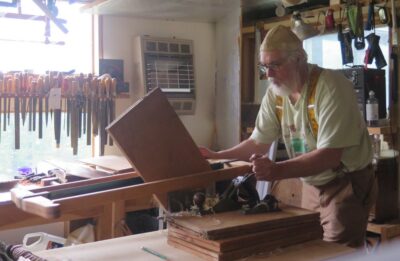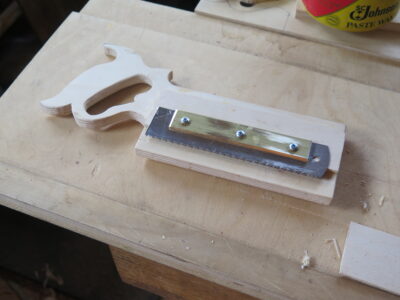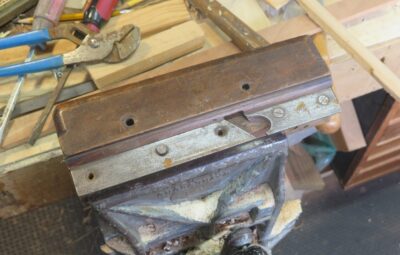From Derelict Plow Plane to Delightful Kerfing Plane
On occasion I think up things to do with derelict tool parts that I pick up along the way. Such is the tale here.


Since I enjoy hand-resawing — sometimes necessity really is the mother of invention, and I do not possess a bandsaw for the task — I’ve invested a bit of time in assembling the requisite accouterments for the task. Included in this mélange would be several kerfing planes with fixed fences to reflect the more typical thicknesses I am trying to cut. These are made out of Baltic Birch plywood and work just fine.
When I began assembling my 18th Century tool kit for demonstrating I wanted to include resawing in the mix since folks are genuinely amazed to see that work being done. My kerfing planes would suffice for functionality but not for aesthetics or interpretation, so I dug around in my boxes of spare parts to see what could be done. I found an abandoned body of a plough plane and the light bulb went off. I was especially attracted to the moving fence on the sole. I can never remember what this part is called. Is it the fillister, or is that something else? Whatever it is I thought it would be a nice feature for a kerfing plane to include in my kit.

Roubo Plate 14 Figure 14
I do not think this notion is historically outlandish as there is a plane/saw included in Roubo that really seems to bear a peculiar resemblance to the kerfing plane in current use. Although Roubo refers to this as a tenon shoulder saw, I could definitely see it working as a kerfing saw with virtually no modification.

My first step in transforming this derelict into a delight was to remove the skate guide from the plane body. This was not an easy task as several of the screws had cemented themselves into place with corrosion. I got a couple out by customizing a screwdriver but had to drill out three of the heads and then file the shafts flat to their surroundings.

I was using a piece of a bow saw blade for this tool and had to cut a groove up into the plane body into which the top of the blade was inserted to the plane body where the skate was, to bring the saw teeth into proper relationship with the movable fence.

Once that was accomplished, I punched and drilled new holes for the screws attaching the blade to the body. Viola’, a lovely new tool from the carcass of an old one.
The native fence set-up gives me just a shade over 1/2″ so I might re-tinker with that at some point in the future to expand the capacity to an inch or so.


For the tenon saw, look here
https://www.furnituremaking.com/chairs-and-more/difficult-tenon-shoulders-made-easier